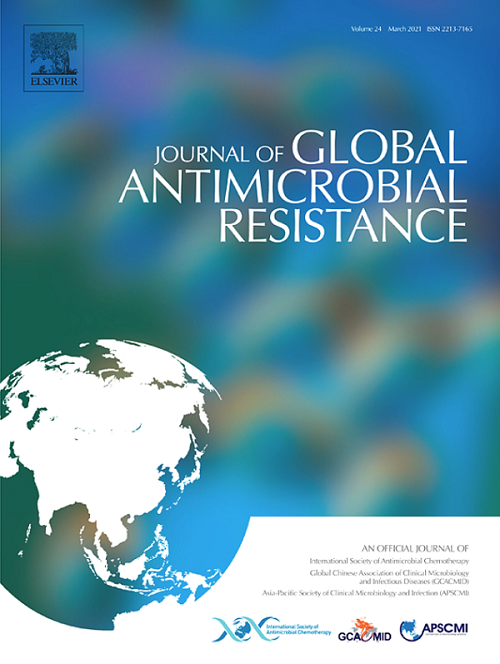Assessing the utilization of HIV genotype resistance testing: Insight from Italian Infectious Diseases Units
IF 3.7
3区 医学
Q2 INFECTIOUS DISEASES
引用次数: 0
Abstract
Purpose
We aimed to assess the utilization of genotype resistance testing (GRT) by Infectious Diseases Units across Italy.
Methods
A cross-sectional study was conducted involving a questionnaire distributed to the Infectious Diseases Unit in Italy. A web-based survey using Google Forms software was utilized and spread via email or cellphone.
Results
Responses were obtained from 101 Infectious Diseases Units. Among these centres, only seven (6.9%) reported not performing GRT at any time. Of the 94 centres performing GRT, 52 (55.3%) sent blood samples to external laboratories. Notably, only 6/35 (17.1%) small centres had internal laboratories, compared to 14/35 (40.0%) medium centres and 22/24 (91.7%) large centres (P < 0.001). Most centres requested GRT for treatment-naïve individuals and all cases of virological failure. Only 24 (25.5%) requested GRT of HIVDNA before treatment changes. Regarding virological failure, most centres (38, 40.4%) requested GRT when HIV-RNA levels exceeded 200 copies/mL, while 26 (27.7%) requested it at levels exceeding 50 copies/mL. Additionally, 18 (19.1%) and 12 (12.8%) centres requested GRT at thresholds of 500 copies/mL and 1000 copies/mL, respectively. Regarding the specific GRT test used, 34 (36.2%) were unsure, while 16 (17.0%) reported using both next-generation sequencing and Sanger methods. Furthermore, 30 (31.9%) and 14 (14.9%) centres exclusively used next-generation sequencing and Sanger, respectively. Most centres reported receiving GRT results within 1 month (n = 72, 76.6%), while 22 (23.4%) centres obtained results within 2 weeks. However, 22 (23.4%) centres typically experienced more than 1-month delays. Finally, most participants (86, 91.5%) regarded GRT as a crucial routine test for the treatment of naïve people living with HIV.
Conclusions
This study demonstrates that most Infectious Diseases Units in Italy continue to consider GRT an essential test for newly diagnosed people living with HIV in clinical practice. However, the utilization of GRT on HIV-DNA remains limited. Further efforts are required to decrease turnaround time in centres experiencing prolonged delays in obtaining results.
评估HIV基因型抗性测试的使用:来自意大利传染病单位的见解。
目的:我们旨在评估意大利传染病单位对基因型耐药试验(GRT)的利用情况。方法:采用横断面研究,向意大利传染病科发放问卷。利用谷歌Forms软件进行网络调查,并通过电子邮件或手机传播。结果:获得了101个传染病单位的反馈。在这些中心中,只有7个(6.9%)报告没有在任何时候进行GRT。在94个进行GRT的中心中,52个(55.3%)将血液样本送到外部实验室。值得注意的是,只有6/35(17.1%)的小型中心有内部实验室,而14/35(40.0%)的中型中心和22/24(91.7%)的大型中心有内部实验室(结论:本研究表明,意大利大多数传染病单位仍然认为GRT是临床实践中新诊断的PLWH的基本检测方法。然而,GRT在HIV-DNA上的应用仍然有限。需要进一步努力,以减少中心的周转时间经历了长时间的延迟,以获得结果。
本文章由计算机程序翻译,如有差异,请以英文原文为准。
求助全文
约1分钟内获得全文
求助全文
来源期刊

Journal of global antimicrobial resistance
INFECTIOUS DISEASES-PHARMACOLOGY & PHARMACY
CiteScore
8.70
自引率
2.20%
发文量
285
审稿时长
34 weeks
期刊介绍:
The Journal of Global Antimicrobial Resistance (JGAR) is a quarterly online journal run by an international Editorial Board that focuses on the global spread of antibiotic-resistant microbes.
JGAR is a dedicated journal for all professionals working in research, health care, the environment and animal infection control, aiming to track the resistance threat worldwide and provides a single voice devoted to antimicrobial resistance (AMR).
Featuring peer-reviewed and up to date research articles, reviews, short notes and hot topics JGAR covers the key topics related to antibacterial, antiviral, antifungal and antiparasitic resistance.
 求助内容:
求助内容: 应助结果提醒方式:
应助结果提醒方式:


